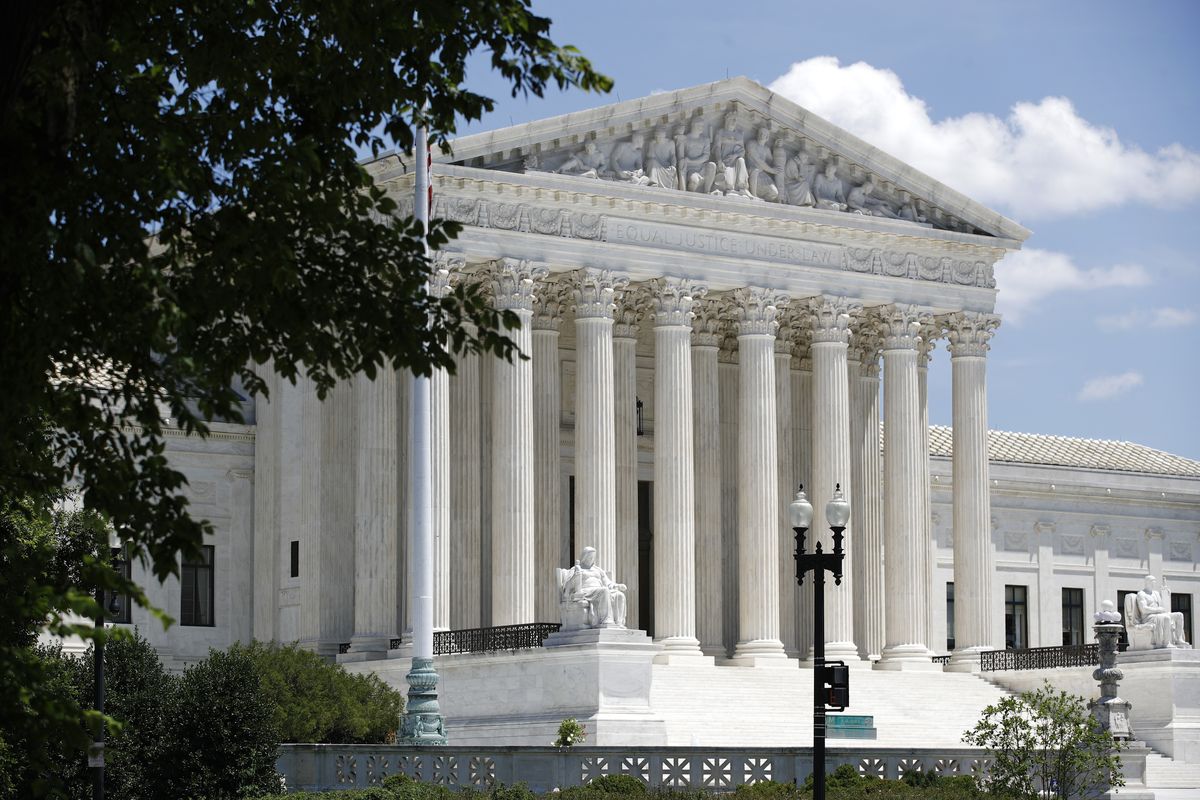We the People: How many seats are on the Supreme Court? And how did we get there?

Each week, The Spokesman-Review examines one question from the Naturalization Test immigrants must pass to become United States citizens.
Today’s questions: How many seats are on the Supreme Court? And how many Supreme Court justices are usually needed to decide a case?
Since the Supreme Court formed more than 200 years ago, presidents and Congress have attempted to change the number of justices – an effort to change the majority of the court to fit their political needs.
The current number hasn’t changed since 1869, but some liberal Democrats and possibly President Joe Biden are contemplating it, and nothing in the Constitution is stopping them.
Currently, the Supreme Court has nine justices, and for a case to be decided, a majority (in this case, five) of the justices need to agree. For the court to hear a case, only four justices need to agree, but the process is selective. The court opts to hear only about 100 to 150 cases a year out of about 7,000 it is asked to consider.
Nowhere in the Constitution does it say how many seats should be on the court, said Shaakirrah Sanders, University of Idaho law professor.
Article III of the Constitution calls for the creation of a Supreme Court but leaves most of the details up to Congress, including how many justices it should have. Congress then passed the Judiciary Act of 1789, establishing the federal court system and the attorney general. It set up a Supreme Court with a chief justice and five associate justices, according to the Supreme Court Historical Society.
The number of justices changed six times before settling on nine in 1869, mostly through judiciary acts supported by presidents who wanted to expand the court for political purposes.
The number of justices on the Supreme Court has been up for debate in recent years. Calls to expand the court from some Democrats grew after Justice Ruth Bader Ginsburg, a liberal, died last year and she was replaced by conservative Amy Coney Barret.
During his four-year term, President Donald Trump nominated three justices to the court, leaving it with a 6-3 conservative majority.
In April, President Joe Biden ordered a 180-day study of U.S. Supreme Court reform, including the size and justices’ lifetime appointments. Just days later, congressional Democrats released a proposal that would expand the number of seats on the court from nine to 13. The proposal is not likely to make it to the floor.
Democrats worry the current breakdown could result in the court striking down legislative priorities from Biden or revisiting and repealing previous court cases.
The court decided earl ier this month that it will review the constitutionality of a Mississippi ban on abortions after 15 weeks. The decision drew concern among Democrats who worry it will give the court the opportunity to overturn the controversial Roe v. Wade case, which gives women the ability to choose to have an abortion without government restriction.
Adding justices to the court is almost always a political move, Sanders said.
Most people think of the Supreme Court of the United States as being independent of politics, but it’s more complicated than that.
“We have to remember that’s not exactly true,” Sanders said. “The way we pick justices is very political.”
The president nominates a justice, and the Senate, which Sanders says is inherently political, approves the nomination.
The only reason a president might want to add justices is to flip the majority of the court, she said.
In 1937, for example, President Franklin Roosevelt supported policy that would add as many as six new justices to the court in an effort to create a court that would rule in his favor. His court packing plan failed in Congress, but within a few years, seven of the Court’s nine justices were appointed by Roosevelt, according to Rutgers University.
Sanders said it may depend on what one considers “political.”
Some may argue that expanding the court could allow for more diversity in justices. Of the 115 Supreme Court justices in history, all but seven have been white men.
If Congress wants to expand the number of justices, nothing in the Constitution would stop them, she said. If not, Biden will have to wait until there is an opening on the court to appoint someone he feels aligns with his views.
